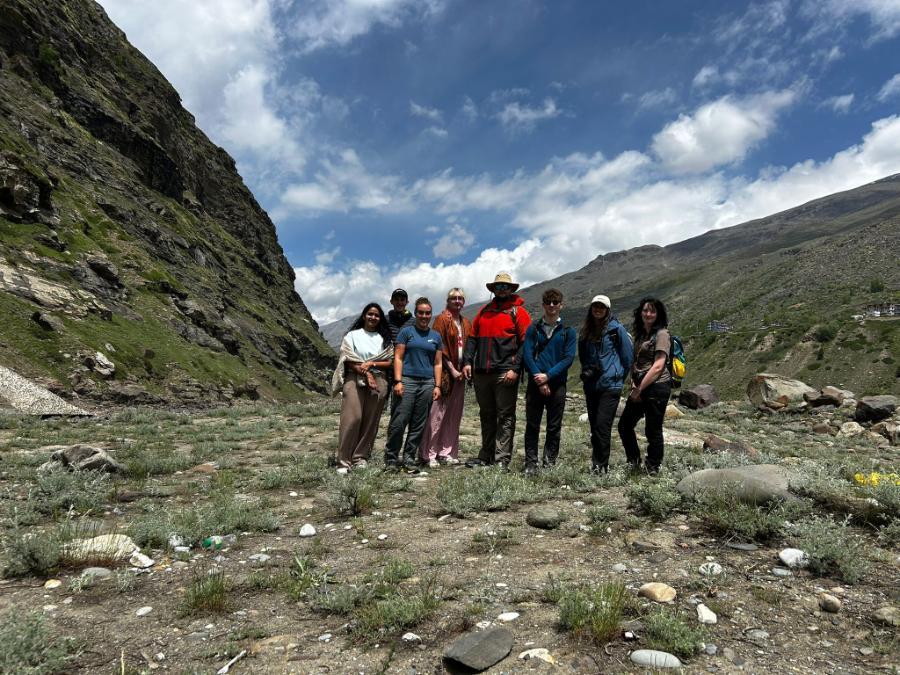
People who experience dental anxiety 2 also tend to skip attending their dental appointments, delay in seeking treatment or simply avoid it altogether 3. The fear associated with dental treatment is ranked as both the fifth most common and fifth most intense fear and phobia in the general population 4,5.
Increased dental anxiety associated with stimuli or physical sensations has been reported in people undergoing dental procedures such as “feeling the drill in the mouth” 6. A higher number of decayed tooth surfaces, tooth decay and missing teeth along with a lower number of tooth fillings or functional teeth are more commonly seen in people with high dental fear compared to those with low dental fear. Interestingly, a study found no differences in caries prevalence between these groups of high and lower dental fear 7. This suggests that we are all at risk of dental caries that can occur in tooth enamel, dentin, surface, and pit and fissures 8. Perceived levels of dental anxiety also vary with different dental treatments, for instance, tooth extraction has been perceived to be the most fearful 9 yet the occurrence of dental anxiety in patients persists regardless of whether they have had previous experience in endodontic treatment or previous experience in pain in the treated tooth 10. This brings us to the question of having good teeth. What if our teeth and gums are always healthy to enable every dental visit to become pleasant and “drill”-free?
What can we do to have good dental health?
Maintaining good oral care and hygiene will help to keep our teeth and gums as healthy as possible and avoid tooth decay. Avoiding sugary and starchy food and drinks will help prevent tooth decay. Regular brushing with fluoride toothpaste or using floss and an interdental brush at least once a day also helps. Adopting a healthier lifestyle such as not smoking or avoiding excessive alcohol consumption may prevent further tooth caries. Community water fluoridation is also effective in reducing tooth decay 11,12.
Risk of tooth loss in our lifetime

While dental caries and periodontal disease are two major causes of poor oral health, tooth loss often occurs because of injury or disease, rather than because of ageing. For example, inflammation from periodontitis can cause soft tissue pockets or crevices between the gums and the tooth root. Following this, loosening of teeth may occur with occasional pain, problems with chewing, and eventually lead to tooth loss 13. In addition, tooth enamel can also chip and crack. If this happens, its function to insulate our teeth from chemicals or changes in temperature will be impaired.
Growing back our teeth

The idea of cell regeneration of human teeth is an exciting one. Sharks’ teeth appear in rows similar to a harvesting machine with many rows of blades. In fact, sharks have multiple rows of teeth inside their jaw which constantly regrow so that a corresponding tooth in a row behind one that has dropped out will move forward to replace it. What is amazing is that the gums of the shark support and carry each tooth just like a conveyor belt.
In studying a small species of shark known as the catshark (Scyliorhinus canicula), researchers found special compartments of stem cells within the epithelial cells that line the sharks’ mouths. These stem cells that generate from within the compartments enable continuous tooth regrowth in the catshark 14. Similar functions of regrowth are also reported in renal stem cells in sharks where existing stem cells are induced to form new glomeruli when there is a loss of renal tissue 15. What is unique about stem cells is their ability to multiply and transform into cells which serve different functions in the body. There is a huge potential for stem cells to be used in regenerative medicine or living cell therapies.
Promoting stem cells to regrow teeth
Low power light (LPL) treatment, otherwise known as laser treatment or low-level laser therapy is not new 16,17. Laser treatment has been used to reduce pain and inflammation 18 and to promote wound healing 19,20. Researchers in Korea used a lower power laser to see if this would stimulate the growth of human dental stem cells to form dentin 21. To do this, human dental stem cells were given laser treatment at various pulses. After 21 days, results showed that there was indeed the growth of dentin from the human dental stem cells. The researchers found that the laser treatment had stimulated cellular activity associated with oxygen-reactive species and mitochondria, which in turn triggered a transforming growth factor that signalled the human dental stem cells to form dentin. This shows that laser treatment can help to promote repair or healing by stimulating cellular pathways in stem cells. Being able to grow new dentin is definitely a good idea.
After their successful trial using two animal models, scientists in China conducted a clinical trial on implanting human deciduous pulp stem cells into the injured teeth of dental patients 22. After twelve months, they found that pulp tissue equipped with blood vessels and sensory nerves had indeed regenerated. Furthermore, there were increases in the length of the root and a reduction at the apical foramen, the point at which where the nerve and blood vessels enter the root of a tooth. This research is encouraging because it shows that implanting tooth stem cells may help in the recovery of injured teeth.
The best thing indeed is to have the ability to grow new teeth. Although treatment for growing new teeth is not available yet, research in this area is continuous and expanding. So meanwhile, before this happens, we should look after our teeth. Once we are adults, we only possess one set of teeth which should be kept healthy so that we can maintain a good quality of life.
View our science courses
References:
- Beaton, L., Freeman, R. & Humphris, G. Why are people afraid of the dentist? Observations and explanations. Med. Princ. Pract. Int. J. Kuwait Univ. Health Sci. Cent. 23, 295–301 (2014).
- Coriat, I., H. Dental anxiety: fear of going to the dentist. Psychoanal. Rev. 33, 365–367 (1946).
- Hill, K., Chadwick, B., Freeman, R., O'Sullivan, I. & Murray, J. Adult Dental Health Survey 2009: relationships between dental attendance patterns, oral health behaviour and the current barriers to dental care. Br. Dent. J. 214, 25 (2013).
- Agras, S., Sylvester, D. & Oliveau, D. The epidemiology of common fears and phobia. Compr. Psychiatry 10, 151–156 (1969).
- Carter, A. E., Carter, G., Boschen, M., AlShwaimi, E. & George, R. Pathways of fear and anxiety in dentistry: A review. World J. Clin. Cases 2, 642–653 (2014).
- Holtzman, J. M., Berg, R. G., Mann, J. & Berkey, D. B. The relationship of age and gender to fear and anxiety in response to dental care. Spec. Care Dentist. 17, 82–87 (1997).
- Schuller, A. A., Willumsen, T. & Holst, D. Are there differences in oral health and oral health behaviour between individuals with high and low dental fear? Community Dent. Oral Epidemiol. 31, 116–121 (2003).
- Selwitz, R. H., Ismail, A. I. & Pitts, N. B. Dental caries. The Lancet 369, 51–59 (2007).
- Stabholz, A. & Peretz, B. Dental anxiety among patients prior to different dental treatments. Int. Dent. J. 49, 90–94 (1999).
- Peretz, B. & Moshonov, J. Dental anxiety among patients undergoing endodontic treatment. J. Endod. 24, 435–437 (1998).
- Lo, C. The Fluoride in Schoolchildren Study [FLOSS]. (2019).
- Zohoori, F. V. & Duckworth, R. M. Fluoride: Intake and Metabolism, Therapeutic and Toxicological Consequences. in Molecular, Genetic, and Nutritional Aspects of Major and Trace Minerals 539–550 (Elsevier, 2017).
- Pihlstrom, B. L., Michalowicz, B. S. & Johnson, N. W. Periodontal diseases. The Lancet 366, 1809–1820 (2005).
- Smith, M. M., Fraser, G. J. & Mitsiadis, T. A. Dental lamina as source of odontogenic stem cells: evolutionary origins and developmental control of tooth generation in gnathostomes. J. Exp. Zoolog. B Mol. Dev. Evol. 312, 260–280 (2009).
- Haller, H., De Groot, K., Bahlmann, F., Elger, M. & Fliser, D. Stem cells and progenitor cells in renal disease. Kidney Int. 68, 1932–1936 (2005).
- Moshkovska, T. & Mayberry, J. It is time to test low-level laser therapy in Great Britain. Postgrad. Med. J. 81, 436–441 (2005).
- Cotler, H. B., Chow, R. T., Hamblin, M. R. & Carroll, J. The Use of Low-Level Laser Therapy (LLLT) For Musculoskeletal Pain. MOJ Orthop. Rheumatol. 2, 00068 (2015).
- Bjordal, J. M., Couppé, C., Chow, R. T., Tunér, J. & Ljunggren, E. A. A systematic review of low-level laser therapy with location-specific doses for pain from chronic joint disorders. Aust. J. Physiother. 49, 107–116 (2003).
- Tumilty, S. et al. Low-level laser treatment of tendinopathy: a systematic review with meta-analysis. Photomed. Laser Surg. 28, 3–16 (2010).
- Bakhtiar, H. et al. The role of stem cell therapy in regeneration of dentine-pulp complex: a systematic review. Prog. Biomater. 7, 249–268 (2018).
- Kim, H. B. et al. Effects of pulsing of light on the dentinogenesis of dental pulp stem cells in vitro. Sci. Rep. 8, 2057 (2018).
- Xuan, K. et al. Deciduous autologous tooth stem cells regenerate dental pulp after implantation into injured teeth. Sci. Transl. Med. 10, eaaf3227 (2018).
Want to find out more?
You are ready to take that next step. Ready to make that life-changing decision and work towards your career goals. By downloading our prospectus you will have the world at your fingertips.
You can browse our 100+ unique course options and have access to finance and support information to get you started. Discover all of the courses available to you from Arts to Zoology – we’re excited to see what you choose.

.jpg)


.jpg)